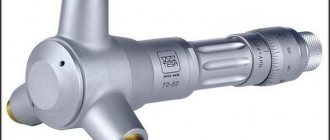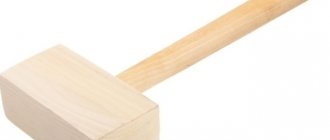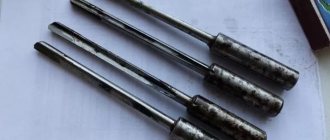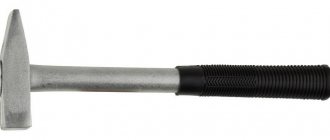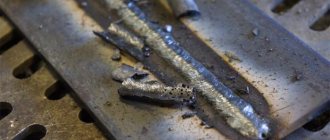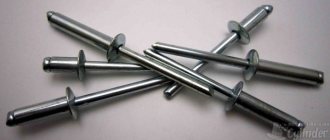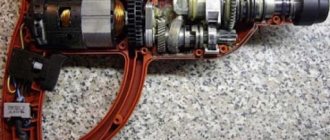At first glance, it may seem that a hammer is the simplest of all existing types of hand tools. But actually it is not. What types of hammers exist and how to choose a quality tool?
Hammers are mainly used to hammer nails, and they are also used to remove dried mortar from bricks. This simple tool is used to straighten sheet iron and helps in accurate work with tiles. Different types differ in weight and shape of the working part. Choosing the right tool is not such a trivial task. The most popular type is the plumber's hammer. So let's talk about it.
This type of hammer is one of the most common. It is used for impacts when chopping something, when punching various holes, riveting, straightening and for other work.
Hammer for plumbing work
This tool consists of a butt, as well as a wooden or plastic handle.
In modern models, the handle is equipped with a special anti-slip coating. This type of hammer is distinguished by the presence of two strikers. So, on the butt there is a blunt square striker and a pointed one, which is used for driving small nails. The square part of the butt can be used with full force.
How to store and carry a hammer?
The hammer should always be at hand while working, but do not hold it constantly! For these purposes, there is a special belt with a convenient holder, which, however, can be made independently, from wire or a piece of leather. The point of the holder is that it allows the handle to pass through the hole, but the firing pin cannot. Thus, the instrument is placed on the belt with the handle down.
For convenient storage of hammers and hammers, it is best to drill holes at the end of the handle (if it was not provided by the manufacturer) and make a stand with nails filled with convenient sizes. If you do not provide this instrument with a permanent “place of residence,” you can be sure that you will spend more than one minute looking for it at the most necessary moment.
Classification by weight
A plumber's hammer is classified by weight. For example, a product weighing from 300 to 500 g is suitable for a home craftsman. The capabilities of such a tool are enough for most household chores. The heaviest tool for plumbing weighs 2 kg. Professionals recommend not limiting yourself to just one hammer in your home workshop, but to have several models of different weights in your arsenal - this will improve the quality and convenience of the work performed.
Weight also depends on the nature of the work. For example, products of 50, 100, 200 and 300 grams are used in instrumental work. Models with a weight of 400, 500 and 600 g are used for plumbing work. A tool weighing 1 kg is used in repair work.
Tips for using the tool
There are several simple tips for those who want to work with different hammers. You should always choose the tool that is best suited for the job. A good choice will contribute to good speed in carrying out the work and, of course, guarantees high-quality execution.
A hammer is not a toy. It can become dangerous in the hands of an amateur. When working with it, you need to consider and follow the safety rules:
- do not play with a hammer;
- do not use a broken tool;
- Do not work with species containing chips and cracks.
Types of plumbing hammers
There are two types of these tools. So, one of them has a rectangular shape with a square striker. The second type has a more convex and round shape.
Square tools are cheaper because they are easier to manufacture.
They are also more common among amateur and professional locksmiths. Round hammers have some advantages. The striking part in this case has some advantage, which increases the force and accuracy of the blow. For lighter work, use a square striker.
According to the technical requirements for these tools, the bench hammer should not have any hardening, burrs or cracks. The firing pin should be as smooth as possible and slightly convex. The handles are made from hardwood. These are dogwood, beech, birch or hornbeam. The length of the handle must be no less than 250 mm. Also, the wood fibers must be directed along the length of the handle, otherwise the handle will simply break. The butts are made from carbon steel grades U7 and U8.
If it is necessary to hammer any fragile materials, then use “soft” hammers. Often the strikers of these tools are made of aluminum alloys, copper, polyurethane, wood or rubber. The most practical option is a locksmith tool with interchangeable heads. Such kits allow you to perform a wider range of work.
Hammer care
If the hitting surface of the hammer becomes dirty or oily, it will slide off the head of the nail, bending it and making indentations on the surface of the product. Keep the firing pin clean by sanding it with fine-grain paper or linen sandpaper.
Protect the vinyl or rubber handle from getting oily by treating it with a brush moistened with warm detergent.
Installing a new handle
If a wooden handle breaks, knock out or cut out the remains with a chisel. Plan the new handle so that it fits snugly into the firing pin socket. Make 2 or 3 cuts (depending on the size of the hammer) across the top of the handle at a slight angle. Saw to a depth equal to approximately 1/3 of the depth of the nest. Place the firing pin on the handle and tap the other end on the workbench with sufficient force to ensure the firing pin is properly seated. File off the part of the handle protruding above the top of the striker, then drive steel wedges into the cuts to spread the handle into its socket. If the wedges are not flush with the end, cut them off using a sharpener.
Working with a claw hammer
To remove a partially driven nail, place the fork of your paw under the head of the nail and use the handle as a lever. You can protect the surface from damage by placing a piece of thick cardboard on it. If the nail is too long to remove in one motion, place a block of wood under the hammer.
Old nails from disassembled frame structures can be pulled out by first tapping the tip so that the head comes out of the wood. Alternatively, wedge the body or head of the nail into the fork of a nail puller and remove the nail by pulling the head straight through the wood.
Source: Woodworking Bible / A. Jackson, D. Day; lane from English Yu.E. Suslova. - Moscow: AST: Kladez, 2015. - 320 p. [ill.] - (Master Golden Hands).
According to GOST
It is no secret that there is a GOST for hammers. So, this type of tools is manufactured according to GOST 2310-77.
This standard applies to steel hammers weighing from 0.05 to 1000 g. Tools, as stated in the document, are created for use in the national economy and for export needs. This GOST does not apply to any other hammers except metalworker's ones.
So, according to the document, in addition to products with a round and square striker, there is also a hammer with a round striker and a spherical toe.
Technical requirements
Locksmith tools must be manufactured in strict accordance with standards and drawings.
Steel 50 or U7 is used as materials for the heads. GOST also provides for other grades of steel, if they are not inferior in mechanical properties. Heads should never be produced by casting.
Hammer wedges are made from ST3 steel or other steels that are not inferior in characteristics to ST3.
As for the handles, the GOST locksmith hammer requires the use of 1st grade hardwood. Often these parts are made from hornbeam, dogwood, ash, birch, oak or beech, as well as from various synthetic materials that can provide the necessary operational strength and reliability.
The hardness of the working surfaces should be from 50.5 to 57 HRC. Hardness is measured in layers with a depth of no less than 5 mm, and also at a distance of no more than 1/5 of the length of the head from the ends and toe of the butt. Some deviations in weight are allowed - this is 12% for products weighing 100 grams. The heads must be covered with various protective coatings. Thus, a distinction is made between oxide coating with oiling, coating made of chromium, phosphates, and cadmium.
As for the connection between the head and the handle, it should be as reliable as possible. Cracks on the handles are unacceptable. The hammer head must have the manufacturer's trademark, the weight of the product, and the price. It is also allowed to apply a trademark to the handle.
How to choose the right tool
As it turns out, a plumber’s hammer is a serious matter, so you need to approach your choice very carefully. The first thing you need to know is the required weight and size of the working part. If you choose a product with a light striker, then the impact force will be insufficient, and a heavy striker, on the contrary, will be too tiring. Heavy hammers can also damage some materials.
When choosing, the working part is also important - the material matters here.
As stated in GOST, butts are not made by casting. You should only choose a forged hammer, and the steel must be hardened and then tempered.
The hardening process is carried out at a high cooling rate, but such materials differ in internal stresses. To relieve these stresses, tempering is performed - the product is heated to 200 degrees and then allowed to cool.
Tempering slightly reduces the strength, but as a result the product is much stronger than parts made from ordinary alloys.
What is a copper (bronze) hammer, scope of application, price and photo?
A copper or bronze hammer and even a sledgehammer are, by and large, no different from ordinary iron hammers, with only one difference - their striker is made of non-ferrous metal (copper or bronze).
Of course, many are perplexed by the question, why make a hammer from copper or bronze, because it has many disadvantages, such as, firstly, the cost of the non-ferrous metal itself, and secondly, these non-ferrous metals are in many ways inferior to iron in strength.
But there are such dangerous jobs, where there is an accumulation of gases, in this place any spark that can be struck by an ordinary iron hammer can cost life and numerous destructions.
You probably already guessed who “loves” to use hammers made of non-ferrous metals, copper and bronze?
Of course, these are those workers who are associated with gas, i.e. gas workers.
These hammers are notable for the fact that they do not produce sparks, and are therefore safe in places with possible accumulation of explosive gas.
A hammer in general is a hand-held percussion tool that can be used to drive nails into a surface; there are hammers that are used for laying paving slabs, hammers for straightening work, etc.
They consist of a handle and a striker, plus a wedge so that the same striker does not fly off the handle.
The shape of the striker, the length of the handle, and the weight of the hammers may vary.
As for the copper (bronze) hammer, this is also a hand-held percussion instrument, but the striker is made not of steel, but of copper, that is, non-ferrous metal, which is why their cost is higher than “ordinary” hammers.
The shape of the striker and the weight of copper hammers can also vary.
Such hammers are used for work (impact work) where it is important not to deform the surface.
And plus, such hammers, unlike hammers with a steel head, practically do not give any recoil.
Also, a bronze hammer is spark-proof, hence the scope of use (work in which even the slightest spark can lead to ignition, gas industry, for example).
But in general we are talking about plumbing and installation work.
As for the price (expensiveness), much depends on the material of the hammer handle, the shape and size of the hammer, as well as on the weight of the product.
I bought this one
But there are copper and bronze hammers (large) that are much more expensive (4 thousand or more), and there are also cheaper ones.
Source
Handles
In modern models, these hammer parts are made of plastic, polyurethane, and fiberglass materials. However, according to the experience of professionals, a wooden handle is still the best and most popular.
Pegs can be driven into the wood to make the grip on the striker stronger.
In addition, if the handle breaks, you can make it yourself.
Fiberglass is also popular today. It is considered a type of fiberglass. This material contains more than 70% fiberglass. Also contains polyester resins. This material is characterized by very high durability and resistance.
Among the main advantages of fiberglass is strength. It is 9 times higher than that of plastic, and also 4 times higher than that of aluminum. Handles for hammers made from it are not deformed.
Bregadier 41-314
This hammer is designed to perform a wide variety of plumbing jobs.
It can also be used in carpentry work. It is made of steel by forging, has a protective phosphate coating, and the striker is square in shape. Model weight – 500 g.
There are no unique technical solutions in the design of this tool, but it is quite reliable and practical for simple home work or professional use.
The manufacturer, in addition to this model, offers other products with wooden handles and different weights, as well as hammers for performing other types of work.
Habero 600 IH 500
This product is also suitable for a wide variety of plumbing jobs.
The material used is steel. The head is covered with black varnish, the striker shape is square.
The chrome vanadium alloy head has high hardness and does not flatten. By the way, the price for such a mechanic’s hammer is more than affordable for a home craftsman (from 200 rubles).
The market also offers other products. Today, the range of metalworking hammers is unusually wide. There are a lot of tools depending on needs, weight, materials, functionality. The main thing when choosing is the quality of materials, ergonomics and durability.
Uses [edit]
Besides hardening (hardening a surface by impact), a ball hammer is useful for many tasks, such as striking with punches and chisels (usually done with the flat face of the hammer). The honed surface is useful for rounding the edges of metal pins and fasteners such as rivets. The ball surface of the hammer can also be used to make gaskets for mating surfaces. A suitable gasket material is held on the surface where the appropriate gasket is required and the operator will lightly tap the edges of the mating surface to pierce the gasket material. [2]
